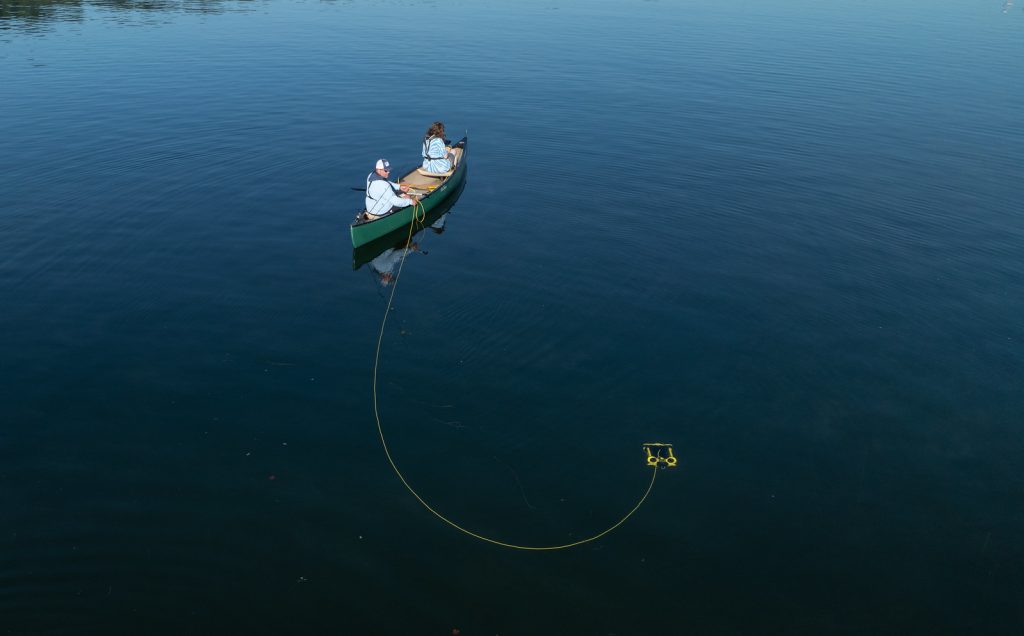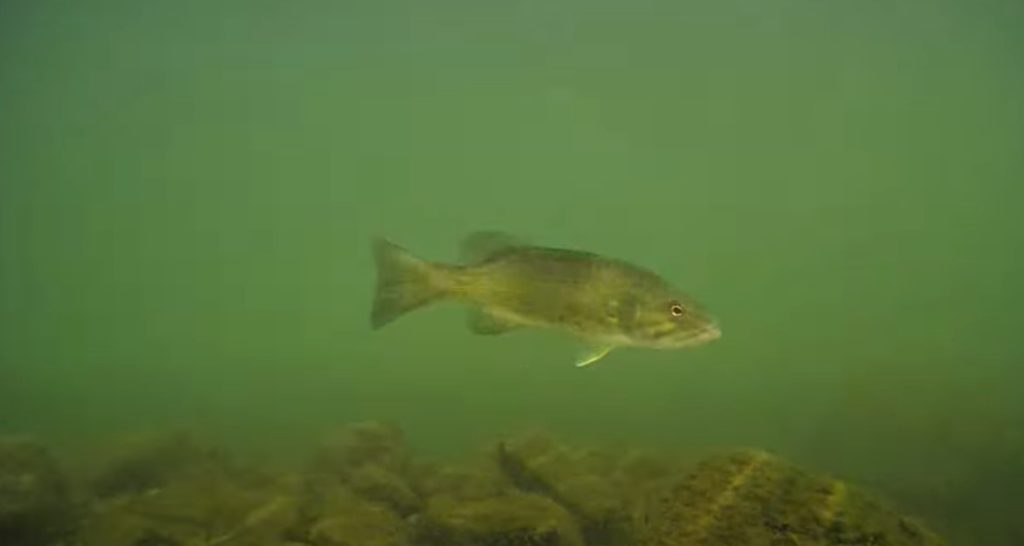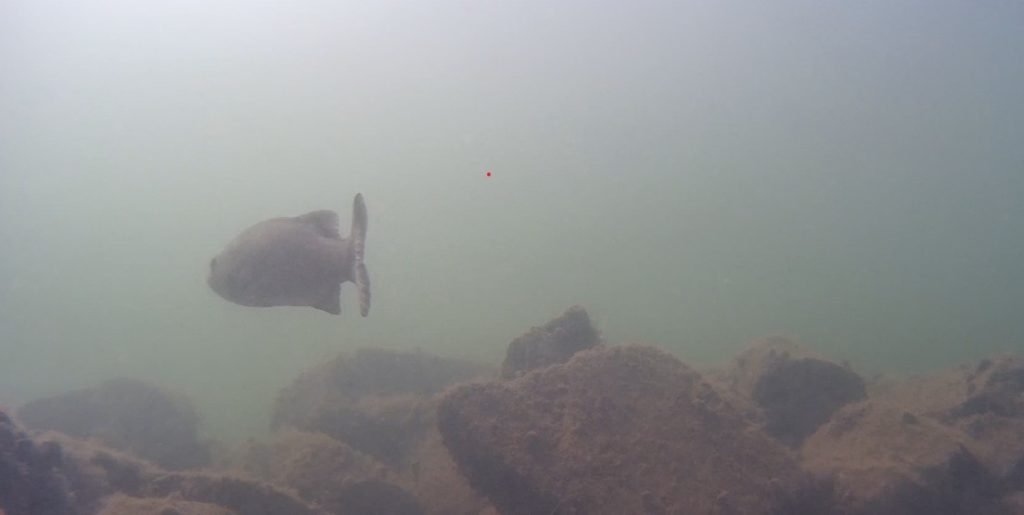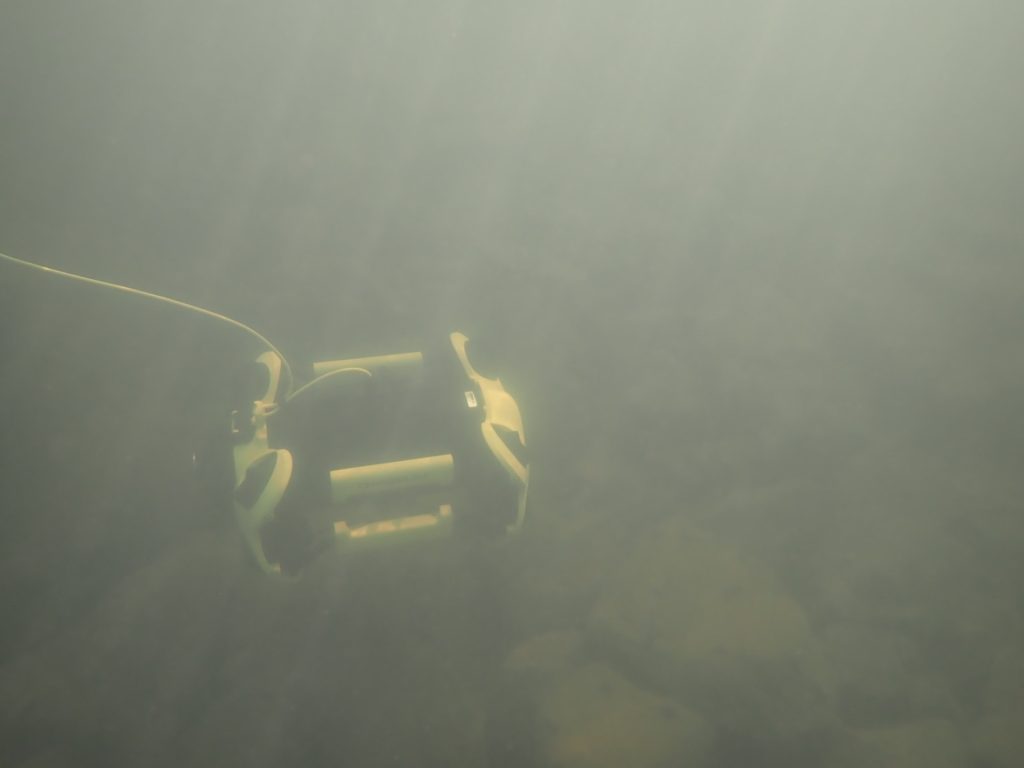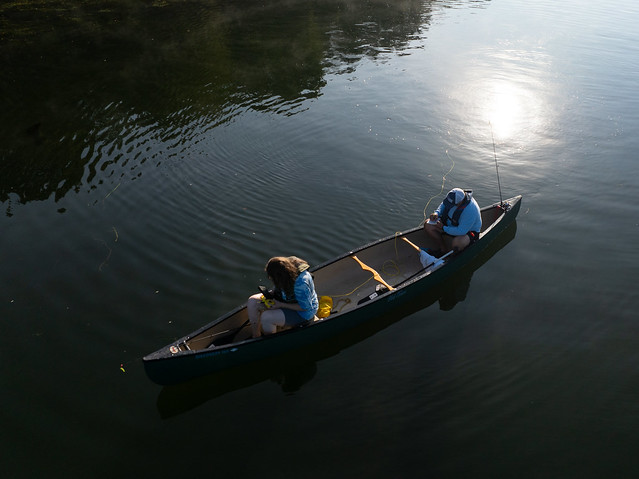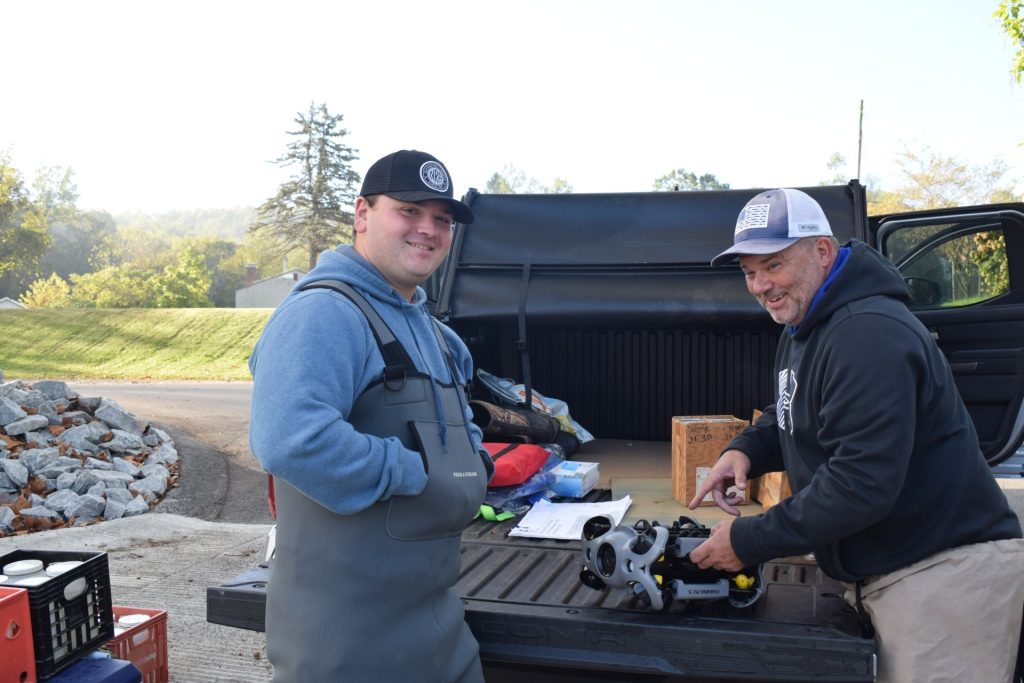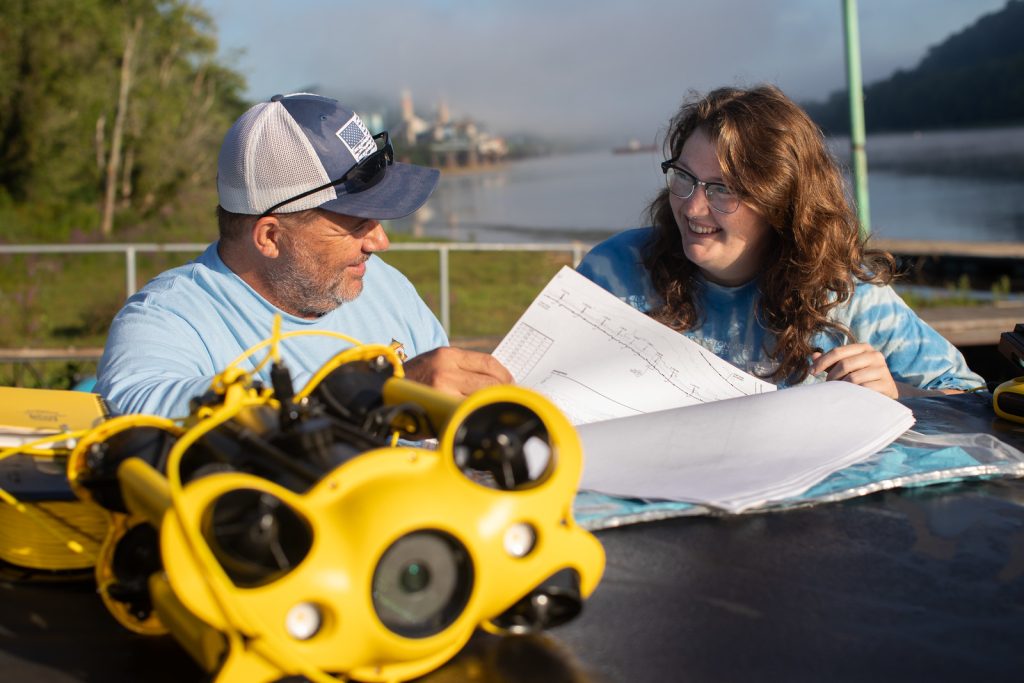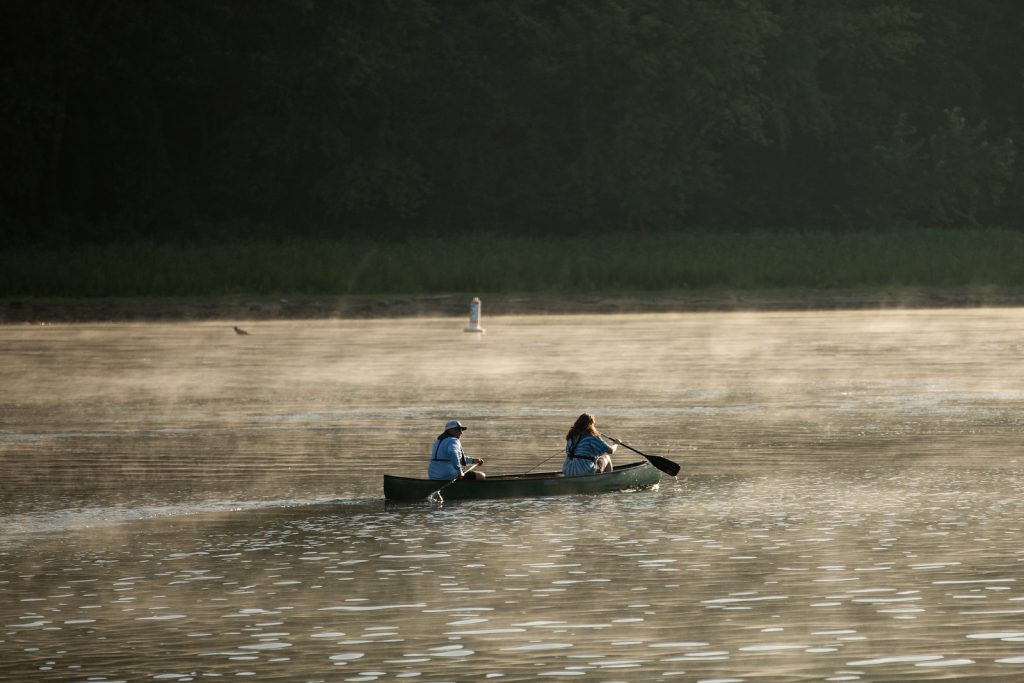Drone diver
PennWest California using drones to study Mon River aquatic life
Last year, when a PennWest California professor pitched the idea of using an underwater drone to study aquatic life in the Monongahela River, his suggestion was met with laughter.
No one is laughing now.
“People thought I was nuts for wanting to do this in the Mon River,” recalled Dr. David Argent, professor of fisheries and wildlife sciences who is leading the project. “Water calms down eventually, and water clarity improves, so I thought it would be an interesting and novel way to investigate aquatic life on these rock structures.”
In conjunction with the removal of the Elizabeth Locks and Dam in 2024, 73 artificial stone fish reefs were constructed to offset the disruption to the river and aquatic life that resulted. The reefs, made of a stone commonly used to armor shorelines and stream beds against erosion, act as new homes for the river’s ecosystem.
Argent met with representatives of the U.S. Army Corps of Engineers, the Pennsylvania Fish and Boat Commission, the state Department of Environmental Protection and faculty from Pittsburgh area colleges. The group convened to evaluate the response of the aquatic community to the installation of the reefs. That’s when Argent suggested employing a drone.
“We were brainstorming ways we could evaluate the response of the aquatic community to the installation of these reefs,” Argent recalled. “I kind of batted around the idea of using underwater drones.”
Funding for the project came through a Center for Faculty Excellence Grant, which covered the cost of the underwater drone and student research positions.
PennWest seniors Garrett Fryar of Leechburg and Kris Clark of Houston, both fisheries and wildlife biology majors, go out on the river with Argent and the drone, collect video footage of the aquatic activity at the reefs and review this footage.
“My whole life I’ve been an avid fisher,” Fryar said. “Dr. Argent introduced me to this research that he’s been doing for about a year. … The field experience is a really great way to take what we learn into the classroom and put it into the field, changing it from knowledge to wisdom as we actually apply what we learn.”
Added Clark, “Any opportunity to go into the field and do anything is a wonderful experience for students to have.”
The group has evaluated 55 reefs and captured about 100 videos. The drone has the capability to video as deep as the bottom of the river. The reefs are about 6 to 10 feet deep.
“In my discipline of fisheries and wildlife we’re getting a little bit of pressure from people about catching and handling species,” Argent said. I’m trying to sell this as a novel way to investigate fish populations. Just for fun, we’ve driven out to the middle of the river to see what’s there. I think we’re all pretty surprised by how clear the water is in the middle of the river, 15 or 20 feet down.”
Argent also admitted to being surprised by the rate of colonization of the reefs.
“Last year, the Army Corps of Engineers dumped these rock piles into the river … and I’m amazed at how quickly sediment moved in,” Argent said. “We’ve had, unfortunately, colonizations of zebra mussels that seem to be taking a foothold. Aquatic vegetation is growing very rapidly in some areas. I’m also surprised at the number of game fish, primarily smallmouth bass and largemouth bass, that we’ve seen on screen as well as bluegill. … It’s been kind of cool to watch the process of ecological succession occur underwater.”
Vegetation and foggy conditions can pose obstacles in locating the reefs, but the students have managed to document their findings once they connect their phones to the drone and start to explore.
Typically, Argent and one of the students take to the water when there is little boat traffic, around 7 a.m.
“Just 30 to 45 minutes later, watching the fog lift and looking over the side of the boat and seeing the reef even without the drone, it’s very serene,” said Clark.
The students will spend the next two months reviewing the videos to identify what has colonized the reefs. As weather conditions permit, more trips to the river will be taken to capture more video.
Findings will be shared at Penn State’s Strike a Spark Conference and at national gatherings of the American Fisheries Society. The society’s national meeting will be coming to Pittsburgh in 2027. Argent said he hopes to continue the project in the future.
“The Army Corps has shown some interest,” Argent said. “They’re doing some improvements on the Montgomery Lock and Dam (Beaver County) and have already reached out and said they might want some additional drone work done in that area to monitor the refuse pile that they’re going to create.”


